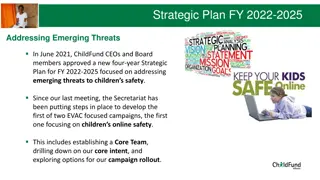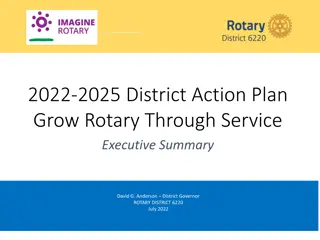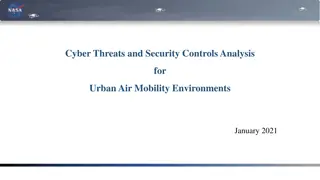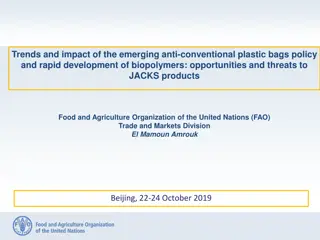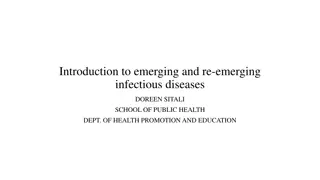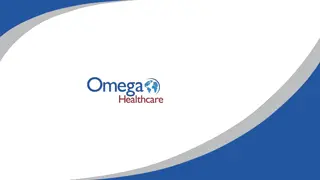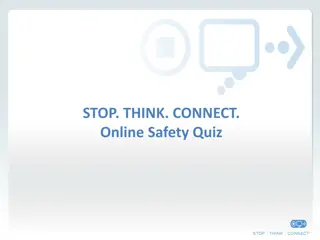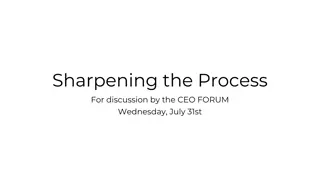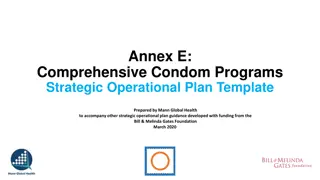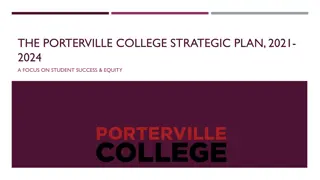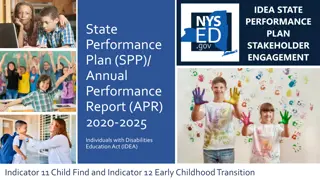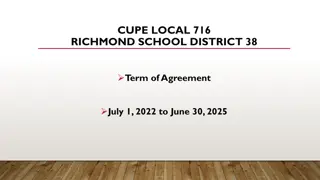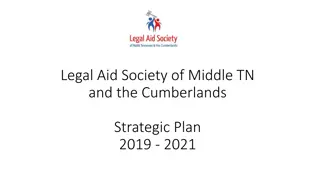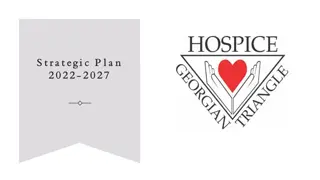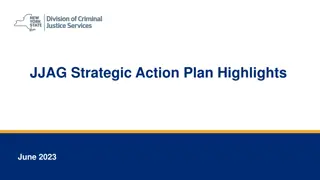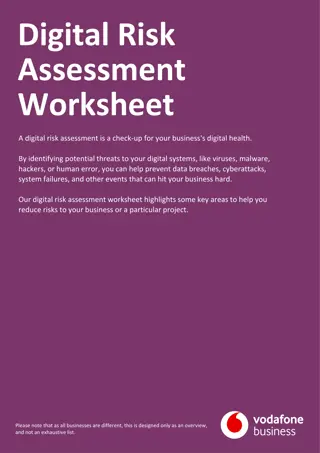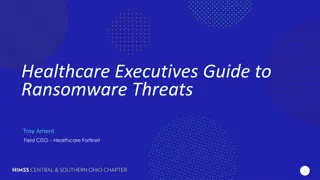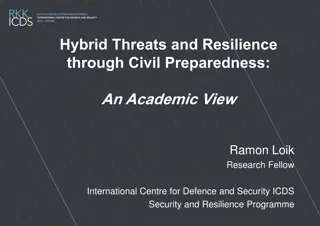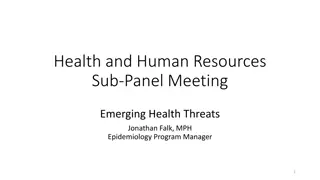Strategic Plan FY 2022-2025: Addressing Emerging Threats to Children's Online Safety
ChildFund approved a Strategic Plan focusing on addressing emerging threats to children's online safety, with initiatives like developing EVAC campaigns. The plan involves a Core Team, including experts, to guide the campaign rollout. Online safety concerns are highlighted, emphasizing the need for action to protect children from online risks.
Download Presentation

Please find below an Image/Link to download the presentation.
The content on the website is provided AS IS for your information and personal use only. It may not be sold, licensed, or shared on other websites without obtaining consent from the author. Download presentation by click this link. If you encounter any issues during the download, it is possible that the publisher has removed the file from their server.
E N D
Presentation Transcript
Strategic Plan FY 2022-2025 Addressing Emerging Threats In June 2021, ChildFund CEOs and Board members approved a new four-year Strategic Plan for FY 2022-2025 focused on addressing emerging threats to children s safety. Since our last meeting, the Secretariat has been putting steps in place to develop the first of two EVAC focused campaigns, the first one focusing on children s online safety. This includes establishing a Core Team, drilling down on our core intent, and exploring options for our campaign rollout.
Strategic Plan Objectives Addressing Emerging Threats
Core Team The Secretariat has established a Core Team comprising Secretariat staff and experts. We will benefit from the input and guidance of program experts and external consultants as we develop the campaign. Advisors & Consultants Amy Lamoin, Global Programs Director, ChildFund Australia Danielle Lilly, Advisor, Policy, USG, ChildFund International Wendy Hirsch, ChildFund Alliance Strategic Plan Consultant Secretariat Team Meg Gardinier, Secretary General Ryan De Souza, Advocacy & Policy Advisor Lori Perkovich, UN Representative Lisa MacSpadden, Strategic Communications Advisor Carole Stephan, EUO Global Partnerships Advisor
Why Online Safety UNICEF estimates more than 175,000 children go online for the first time every day This equates to a new child every half second Interpol reports that the COVID-19 pandemic has amplified online risks In a survey of law enforcement across 39 countries, eight in ten police officers reported an increase in perpetrators attempting to contact children online The National Center for Missing and Exploited Children s Cyber Tipline reviewed 16.9 million sexual abuse materials in 2019, and 21.7 million in 2020
Why Online Safety Call to action by the Committee on the Rights of the Child General comment No. 25 (2021) on children s rights in the digital environment
Child Online Safety Program Mapping Where We Go From Here Objective Identify existing and planned programs related to the campaign Identify the funding sources for these programs Next Steps This mapping will lead to the development of a database accessible to all members The data will help develop connections between the campaign and program work Mapping update
Action Plan Desired Campaign Outcomes Outcome 1: Laws and policies to protect children from online child sexual exploitation and abuse are strengthened Outcome 2: Children are more effective digital citizens and are equipped to participate in online civic engagement safely, ethically and responsibly as part of their healthy development Identifying our Niche Mapping exercise Assessment of the policy and legislative landscape External consultations with trusted partners
Action Plan Preliminary Advocacy Asks Call on relevant parties to work towards strengthening the legislative framework to protect children from online child sexual exploitation and abuse Call on the private sector to lend support to the campaign Call on governments, and online service providers to address the digital divide
Metrics Monitoring and Evaluation Framework Regular collection of information Advocacy and Policy training Member Program training Adaptation into existing laws and policies Awareness
Online Safety Campaign Rollout Two-phased Approach When we are ready to roll out the campaign, we could consider a two-phased approach. Phase 1 A potential target date for Phase 1 is Safer Internet Day on 8 February Phase 2 The second phase could be timed to coincide with our annual CEO Forum / Board meeting in May, or leading up to the meeting.
Online Safety Campaign Rollout Campaign Commitments PHASE 1 / Leverage Safer Internet Day Announce ChildFund s commitment to address emerging online threats to children Highlight campaign goals and objectives Launch a public petition (directed toward general public and designed to advance our campaign objectives) Hold an online safety event featuring ChildFund representatives: Present on an existing ChildFund program (e.g., Swipe Safe) Include child/youth advocates (in-person or via video) Consider inviting a subject matter expert or two
Online Safety Campaign Rollout Global Pledge Is Key Campaign Element PHASE 2 / Spring 2022 Launch ChildFund s Global Pledge at a signing event (signed by members and high-level signatories (e.g., EU Commissioner, UN Ambassador, etc.) Release online safety paper Host panel forum featuring ChildFund members, online safety experts (legal and subject matter experts), and UN / EU Commission / Ambassador level delegates Engage child and youth advocates Produce and release a new ChildFund video
Global Pledge Online Safety Campaign ChildFund will create a pledge focused on a range of children s rights, including their safety, meaningful access to digital technology, and their right to privacy. The pledge will advance our core objectives: Commitment to robust legislation, compliance with national and international laws, and access to justice and remedies Commitment to ensuring children learn about digital citizenship and acquire the skills to explore, create and interact online safely
Global Pledge Addressing Emerging Threats We aim to create a pledge that enables us to secure endorsements by Governments, United Nations, Civil Society, and the Private Sector Early external stakeholders who sign onto the pledge could include: Representation from the European Union, Governments, United Nations, Global Partnership to End Violence Against Children
Priority External Stakeholders Priority External Stakeholders Governments and intergovernmental organizations for initial outreach: Australia, Canada, France, Italy, the European Union United Nations: UNICEF, Office of the Special Representative of the Secretary- General on Violence Against Children, The Office of the High Commissioner for Human Rights, and the Committee on the Rights of the Child International Organizations: Global Partnership to End Violence Against Children, Interpol, The International Telecommunication Union (ITU)
Priority External Stakeholders Represented in coalitions: WeProtect (governments, civil society, international organizations, private sector) Children's Codes (ECPAT, Fairplay, 5Rights Foundation) Building relationships with the private sector: Apple, Google, other technology companies CSOs: Arigatou, ECPAT, Joining Forces Agencies
Priority External Stakeholders Selection Criteria for Pledge Champions Leaders in the digital environment have made commitments through national laws or are signatories to: G7 Digital and Technology Ministerial Declaration Voluntary Principles to Counter Online Child Sexual Exploitation and Abuse United Nation s documents or similar international documents Countries where ChildFund Members are based/operate and provide humanitarian assistance Members of coalitions focused on the digital environment Internal policies have been changed to protect and empower children
UN Representative Advocacy Global Pledge Preparations Developing the Pledge The Core Team is conducting research to inform the process leading to a global pledge: Analysis of government positions and laws regarding: online abuse, privacy, the digital divide, children s digital citizenship Identification of gaps and opportunities to leverage ChildFund strengths including child protection and child participation Mobilization of stakeholdersto support ChildFund s campaign and to sign our pledge High-level Outcomes Advocacy and collaboration with stakeholders leads to: An increase in public awareness Changes in national and international laws and policies Improved digital awareness among children and youth
Addressing Emerging Threats to Childrens Safety Questions & Discussion


